Buck has always been a fascinating company to me. They very rarely jump aboard new trends, and rather tend to trudge along doing their own thing. I don’t say this as a criticism at all, because clearly it works. A Buck knife is unapologetically a Buck knife. It’s curious (because it’s so rare) to handle a fixed blade with unique materials (phenolic scales and aluminium butt cap anyone?) that have not changed in years. With that said, the Buck 119 Special is still very much a capable tool, even to date.
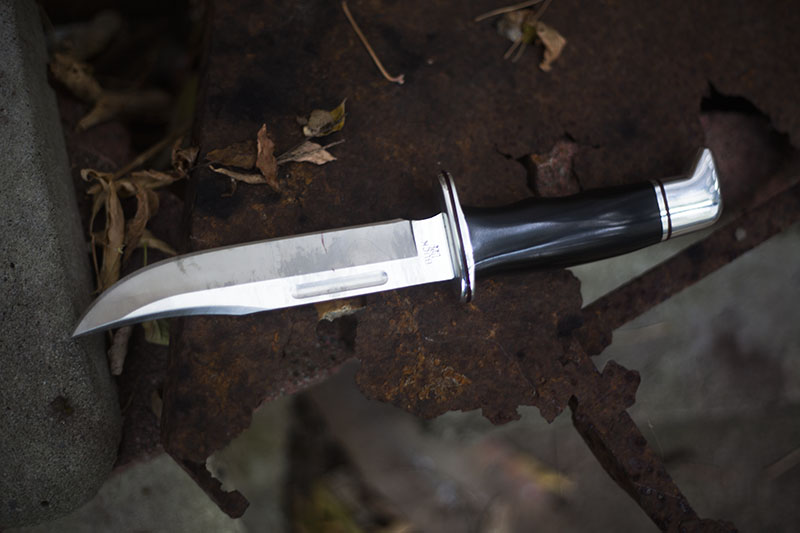 Buck 119 Special Clip Point Hunter Outdoor Knife – Amazon / GP Knives
Buck 119 Special Clip Point Hunter Outdoor Knife – Amazon / GP Knives
I imagine when the Buck 119 was first introduced, it was considered a sizable outdoor knife. Now it’s positively average in proportions in all the right ways. Personally, I think 6 inches is the perfect length of blade for an outdoor knife.

The blade, like with the bulk of Buck knives, is hollow ground (very nicely) with no noticeable imperfections. It’s sad that I even have to remark on this, but only this week I picked up a Boker War Toad for Elise (interesting knife, by the way) that had machining flaws that you wouldn’t see on a $20 knife. It’s a sad state of affairs when a properly made knife becomes an advertising point.
In any case, really nice grinds, Buck. Expected, but I am happy nonetheless.
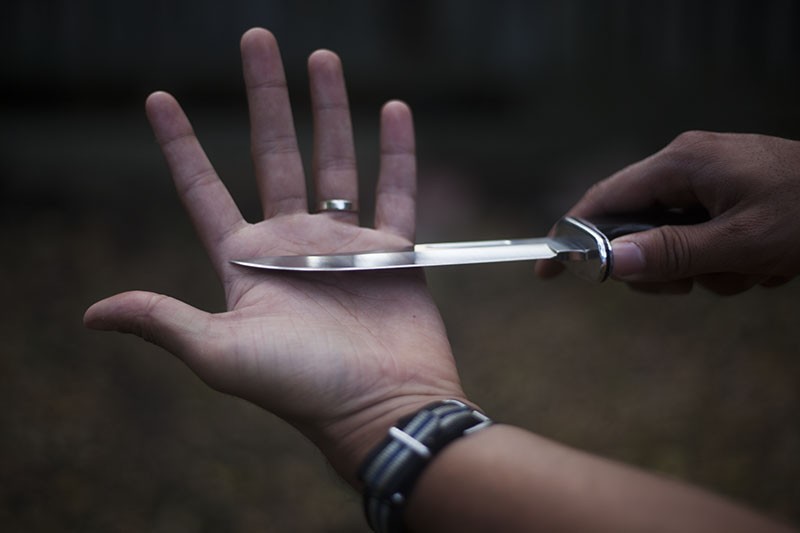
The Buck 119 Special is surprisingly stout. The blade is just shy of 3/16 inches thick, which is definitely on the meatier side of things. Personally, I am happy with 1/8th inch thick blades (or thinner when it comes to Moras), but this is definitely a more heavy duty knife. It’s not a chopper, and it’s not a slicer, but rather, something in between. Would I want to be stuck with only this knife in the wilderness? I sure as hell wouldn’t complain. Plenty of worse options.
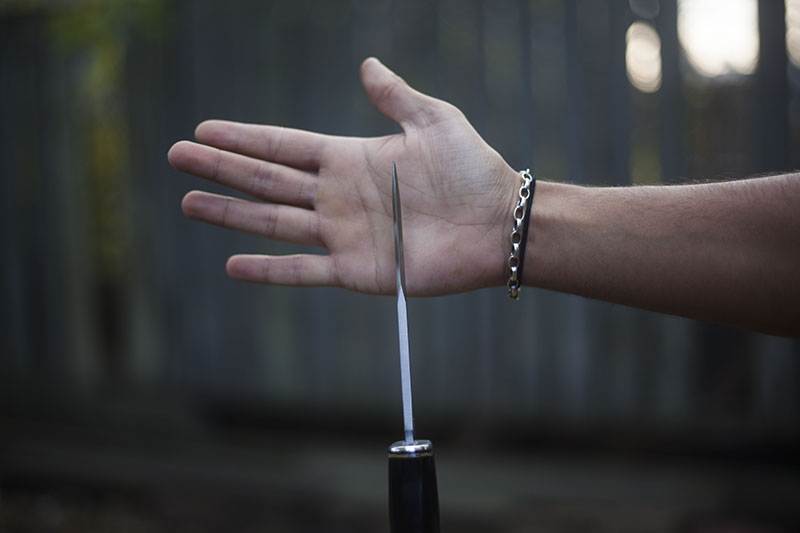
I will mention however that Les Stroud (Canadian survivalist extraordinaire) actually grinds down the tip of his Buck 119 to make it less pointy. I personally didn’t find it fragile in any shape or form, but then again, it illustrates the fact that we all have different prerequisites. Les Stroud maybe needed a very stout tip, whilst I personally prefer finer tips for detail work.
To each his own!
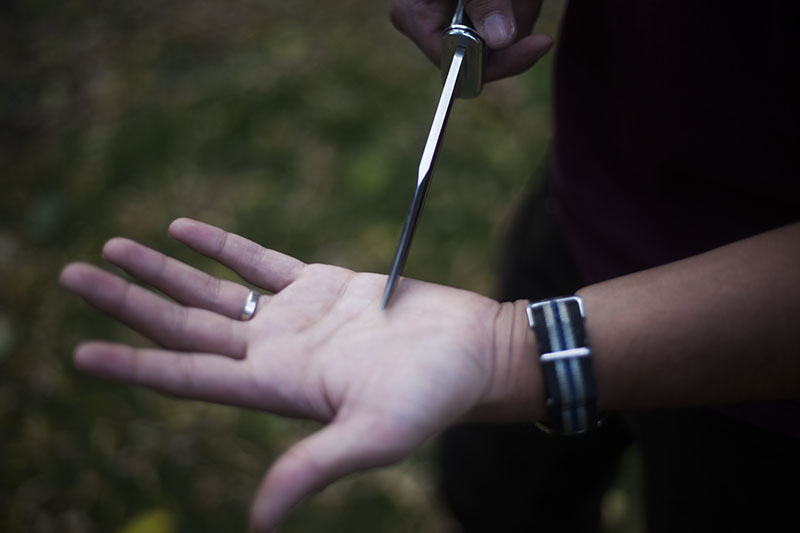
Slicing ability is decent, not amazing, and I’ve gotta admit, I have been utterly spoiled by Scandinavian ground blades like the utterly perfect Condor Bushlore (or any Mora). That being said, the Buck 119 is definitely a viable tool for general woodcraft.

I absolutely love clip point blades. This is like a politically correct (and smaller) version of the Ontario Marine Raider. I don’t know if it offers any advantages in the field over a drop point with the exception of penetration (definitely stabby enough) and field dressing, but going by aesthetics alone, it’s a winner. Gotta love that milled out groove in the blade too!
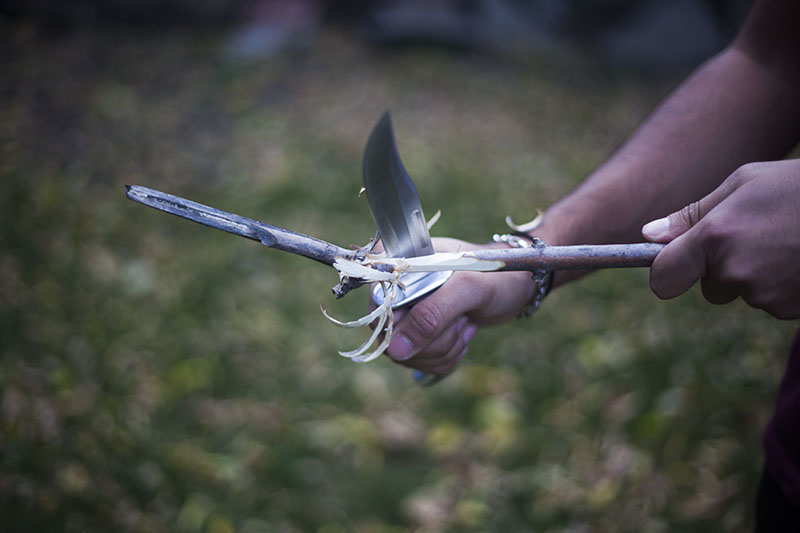
My biggest criticism over the Buck 119 is the guard. I don’t see the point in its existence (a choil would have served it better), but more importantly it gets in the way of choking up. I am used to choking up with my outdoor blades so perhaps someone who isn’t as picky wouldn’t care, but for me it’s a deal breaker. Technically, as you can see below, you can choke up with your pointing finger over the guard, but unfortunately it’s incredibly unsafe (see the next photograph).
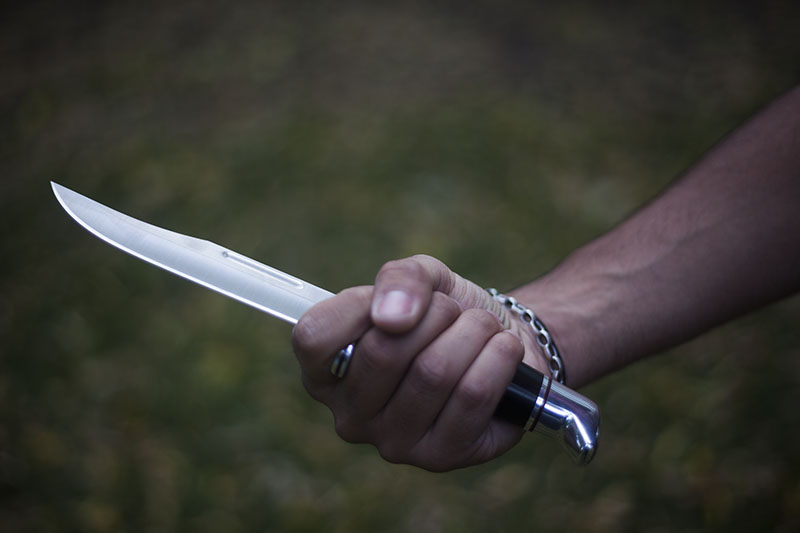
That choil just isn’t long enough. An example of a choil done right (even with a guard) is on the Schrade SCHF9. That thing is a beast. The lack of a decent choil on the Buck limits its usefulness for my own uses. If you don’t care to choke up on your blades then this won’t concern you.
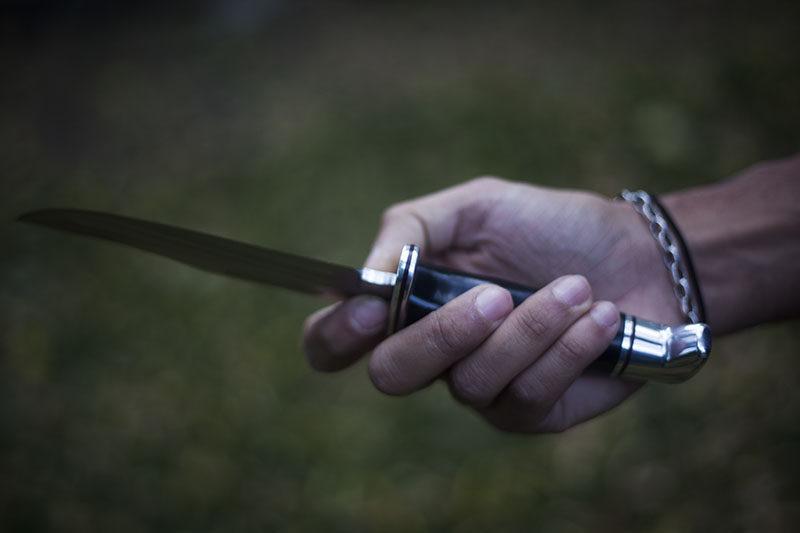
The lack of a significant choil means that the lower portion of the blade can bite into the flesh of your fingers. I have western size L hands (not particularly big) and found myself concerned, I wouldn’t do this regularly, and if I had to do it, I would be very, very careful.
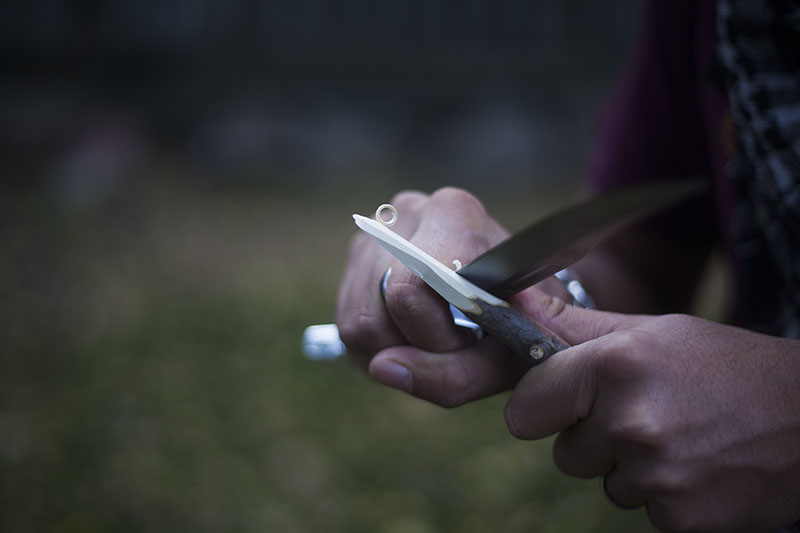
Slicing performance was generally quite good. Les Stroud rocked this knife in the wilderness, you know, during one of his starvation experiments (I kid, I kid), and he had no issues – you won’t either. Frankly this knife is very versatile with no real downsides in terms of cutting ability.
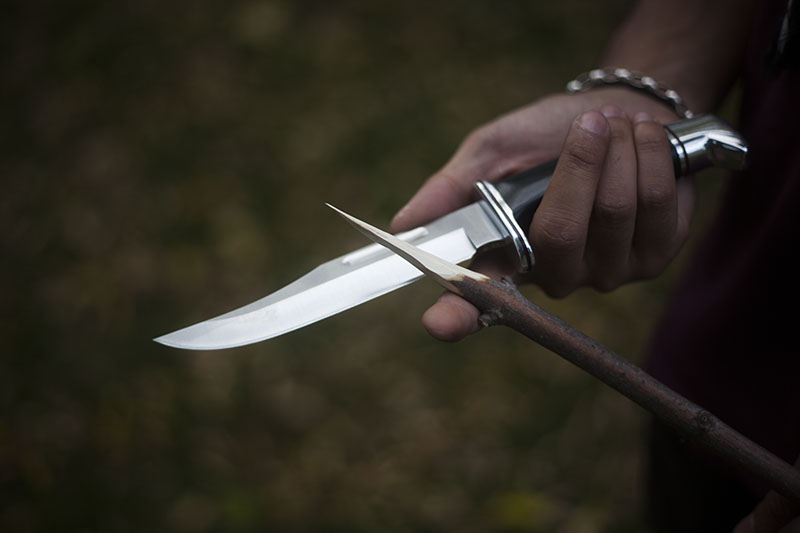
The hollow ground is lean enough that you can bite into the wood for detail notches very easily. The Buck 119 isn’t a chopper.
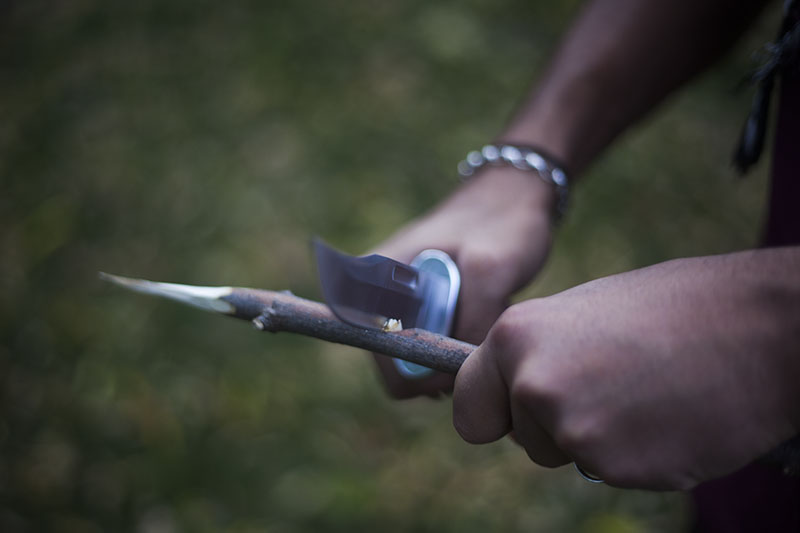
As I mentioned, I like my tips super fine for detail work. The Buck 119’s tip is a smidgen too obtuse for me, but it was functionally adequate.
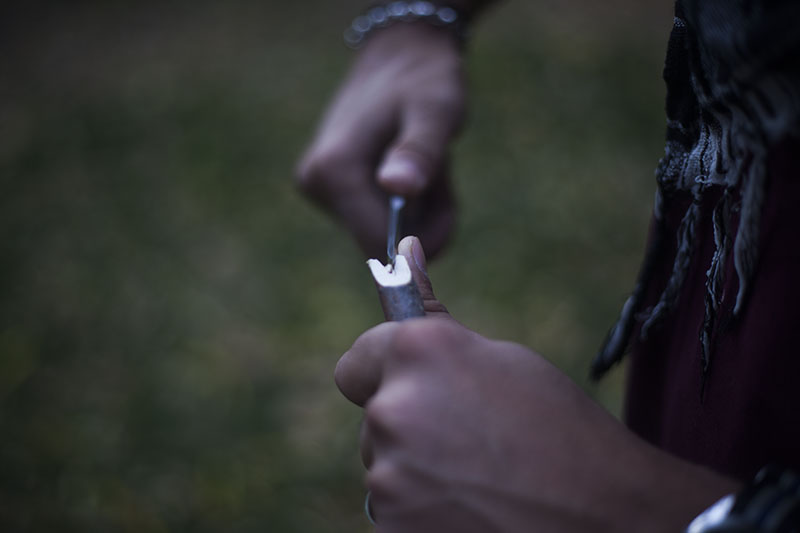
With that said, I know some people prefer more reinforced tips for rougher tasks like batoning. Dealer’s choice really. If you want a more acute point, it wouldn’t be difficult to add one, even without power tools (I would use sandpaper and maybe a rounded file).
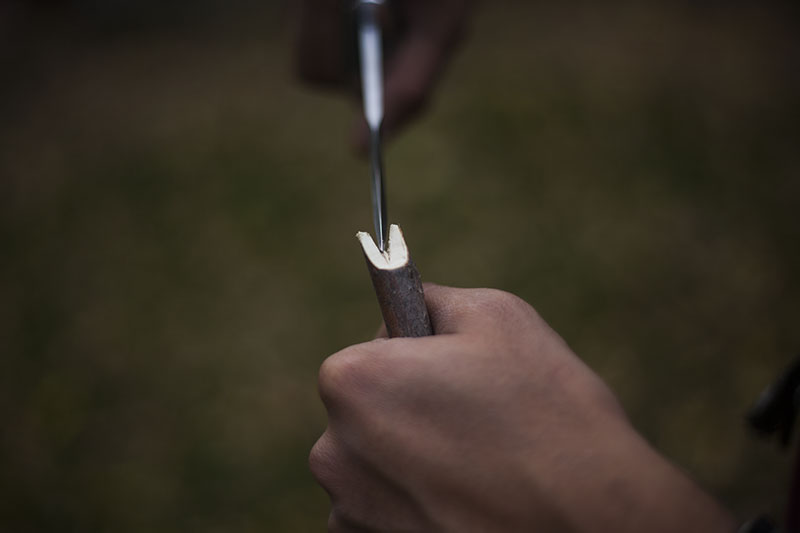
So yes, all in all I was pretty happy with the Buck 119. Not over the moon; this is not competition for my L.T. Wright custom, but it has nothing to be ashamed of.
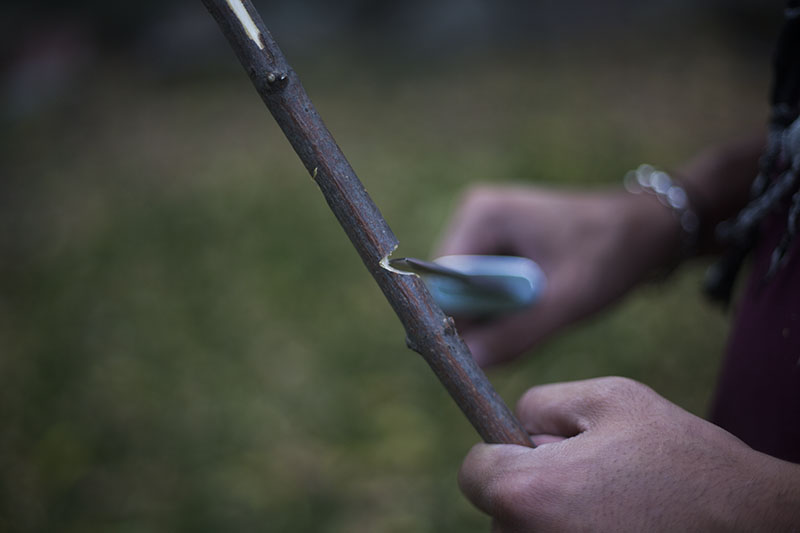
Now onto the tests people like to see!
The tang on the Buck 119 is a stick tang. Unlike a Mora, it’s significantly wider and goes all the way into the pommel. I have no concerns over its toughness, especially with a 3/16 inch slab of 420 HC steel behind the edge.
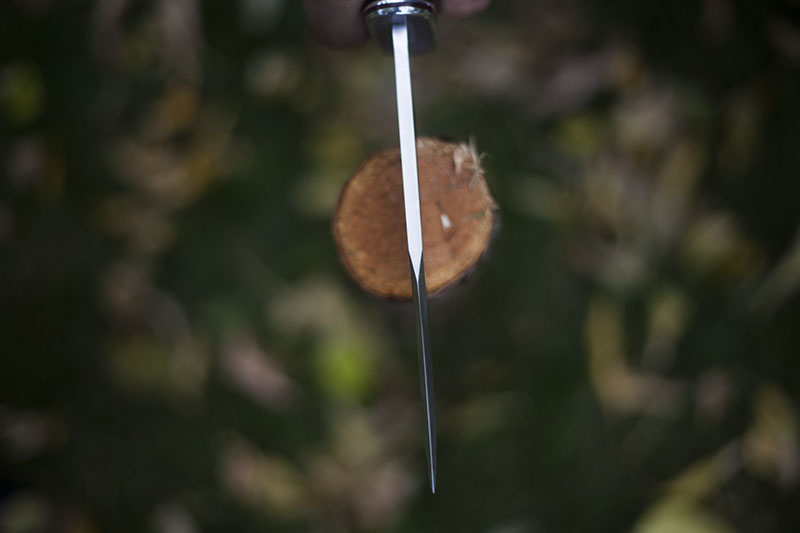
I generally dislike batoning with hollow ground blades. I find the edge tends to bite in very quickly and then you’re often left with a glorified wedge. The Buck 119 was no different. It works, but I would would go with a full convex ground blade over a hollow ground like this every single time.
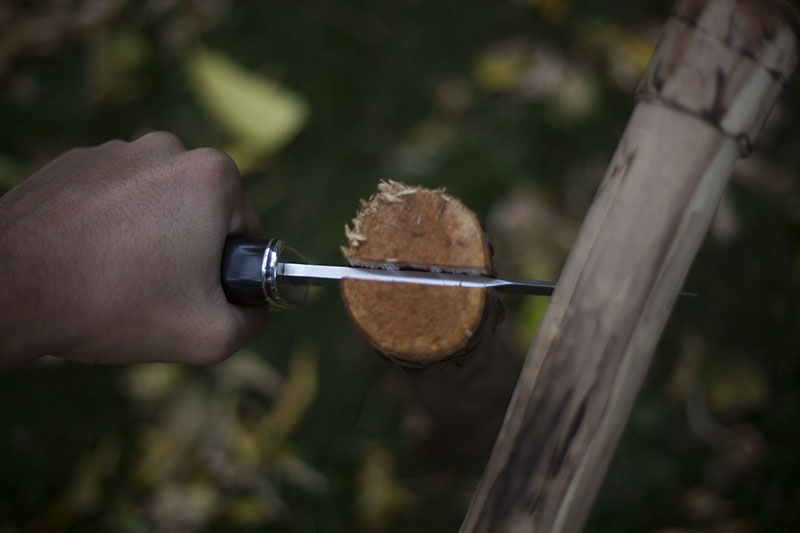
The clip point is ground to an extremely thick, dull edge. It wont cut paper (ever), but it will definitely chew up your baton. Something to consider.
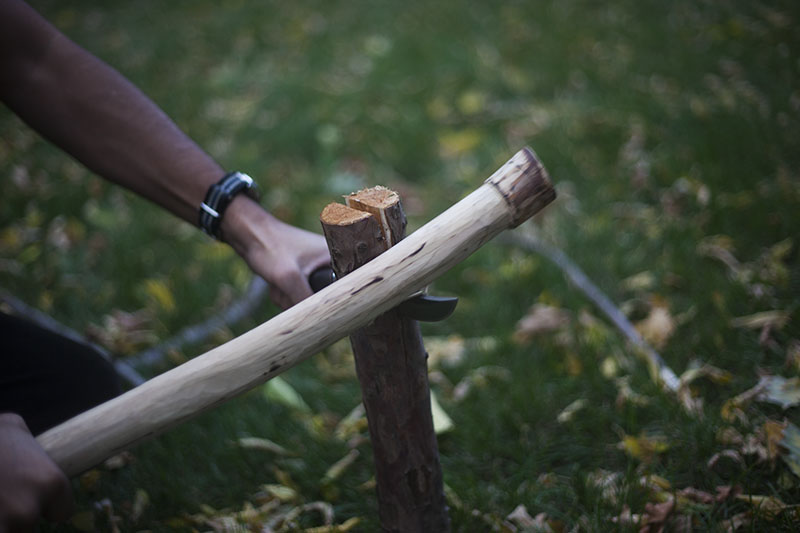
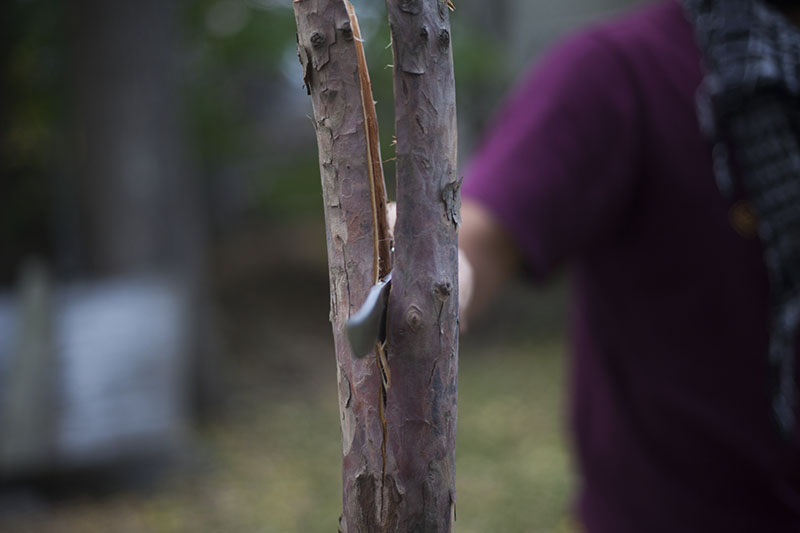
What a pretty sight! Speaking of pretty, Buck used polished aluminium hardware on this beauty and added some super sexy red liners sandwiched in the guard and pommel. It provides contrast and adds a nice visual detail.

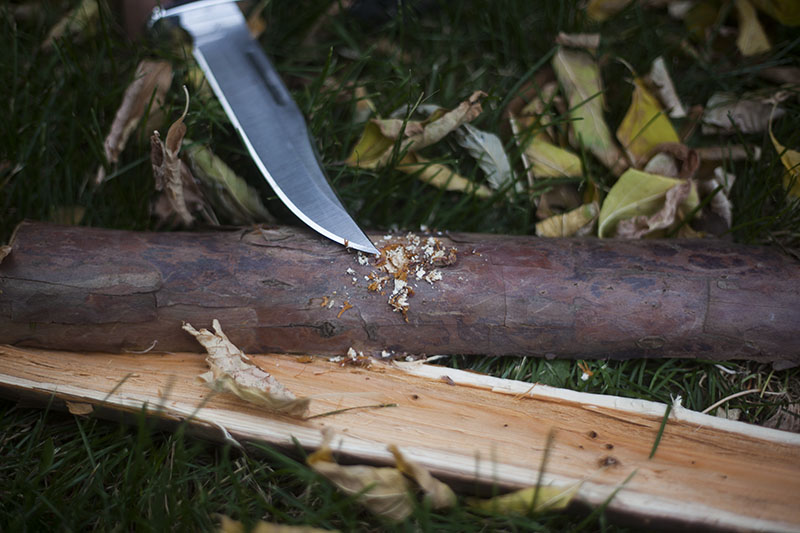
The spine of the Buck 119 is squared off. Some people think you need a carbon steel blade to elicit some sparks out of a fire steel, but you really don’t. The Buck 119 Special belted out gobs of heat with very little work.
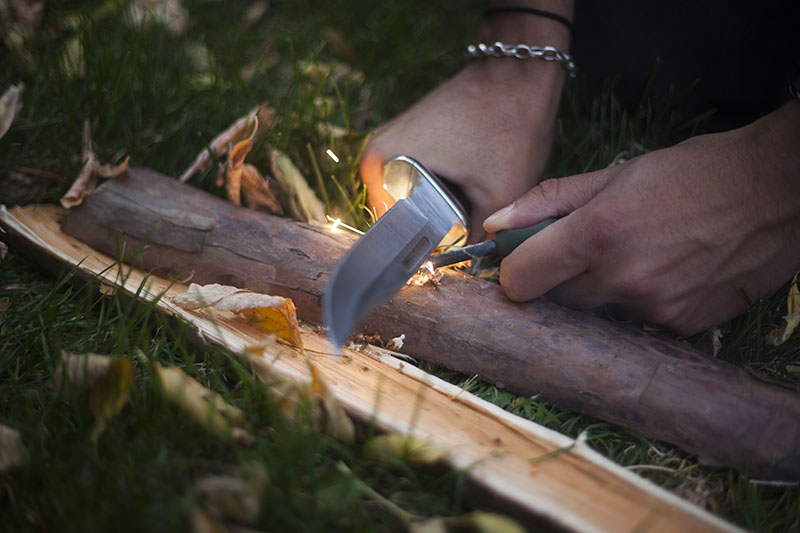
You can see below that the blade is left with clean machining marks. I like it. It contrasts nicely with the polished everything else and gives it a nice industrial/utilitarian look whilst keeping a classic “Buck” style to it.
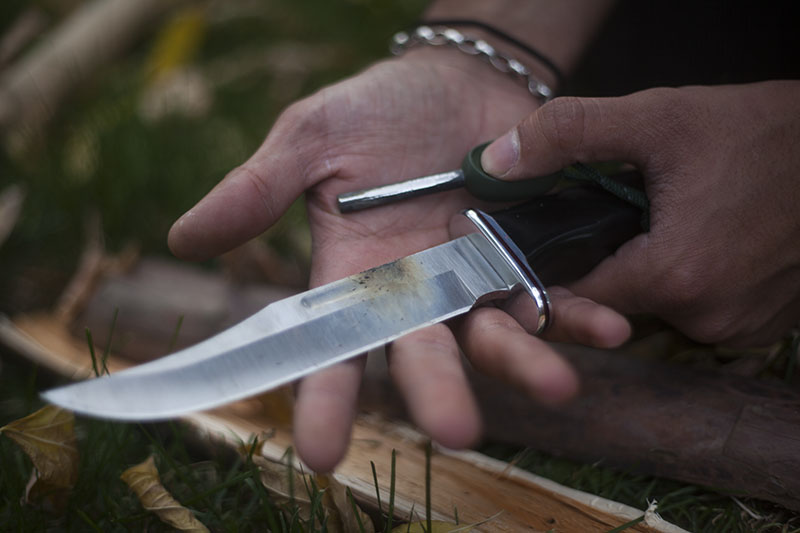
The phenolic resin handles are… weird. As you can see below, Buck went with a very ergonomic handle, lots of curves and palm swells. Personally I prefer more neutral handles, but rest assured that if you have large hands, this knife will feel good. Elise tells me that the ergonomics are fine with her too, so I think from a functional standpoint Buck did well here.
One advantage to having synthetic handles that don’t leave any steel exposed is that in winter (especially in Canada) cold steel against flesh in sub zero temperatures can be quite dangerous. With this, no issues.
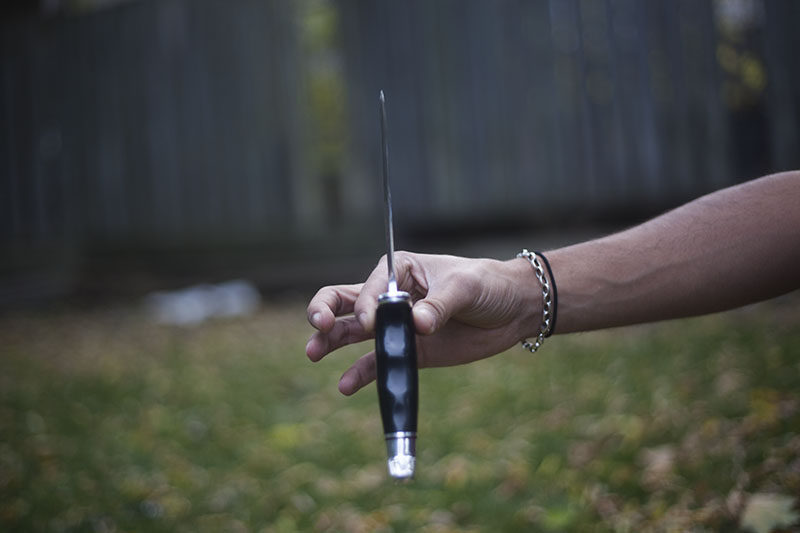
The bird’s beak on the pommel adds a smidgen of safety when holding the knife in a saber grip, although frankly, the handles fill your hand so nicely that I don’t think you even need a guard or protruding pommel. Once in your hands, the Buck 119 ain’t going anywhere.
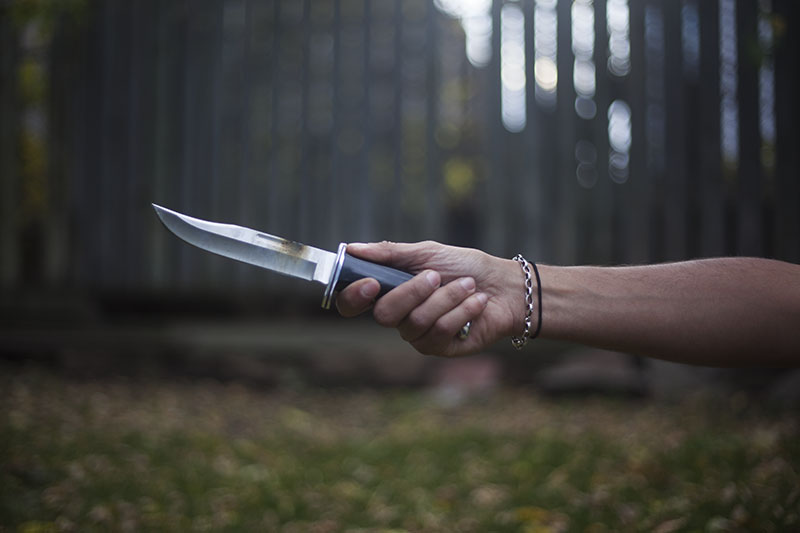
One of the classiest knives I own. I have knives that cost many times what this one did (and this knife is one hell of a bargain, taking into account that it’s made in the USA) that don’t look anywhere near as expensive. I find myself incredibly impressed with Buck’s styling choices with this knife.
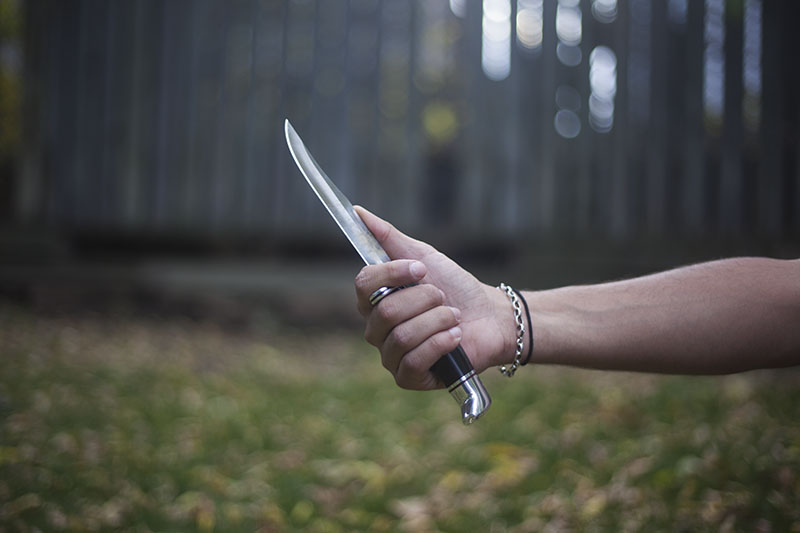
Pinch grip is not really viable. The top of the guard digs into the flesh of your palm and as I mentioned before, the lack of a sizable choil is not conducive to keeping your fingers intact.
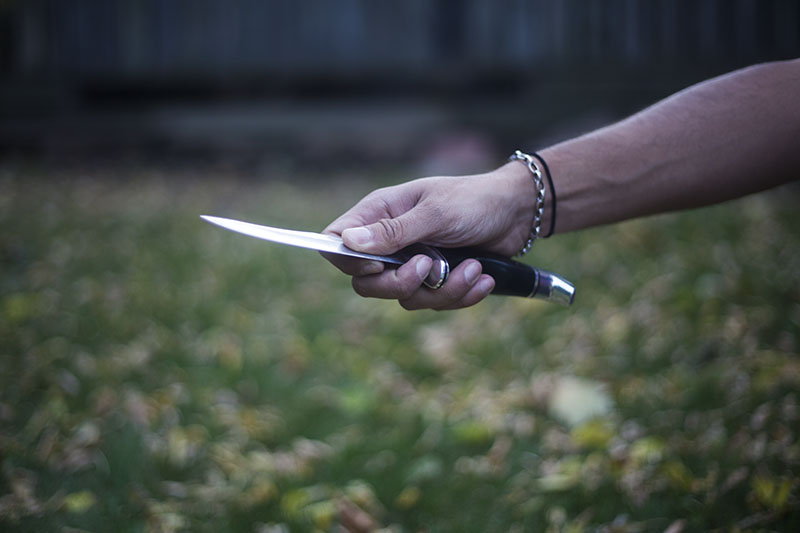
Reverse grip is perfectly comfortable. Not sure if this would be my first pick as a tactical blade (certainly on the blingy side), but it slices well and can most definitely penetrate. In bear country I would opt for something with more reach, but realistically speaking, talking about self-defense with a knife from the comfort of my chair is silly. If I ever have to use a knife under duress I will be happy with whatever I have in my hands.
Just keepin’ it real!
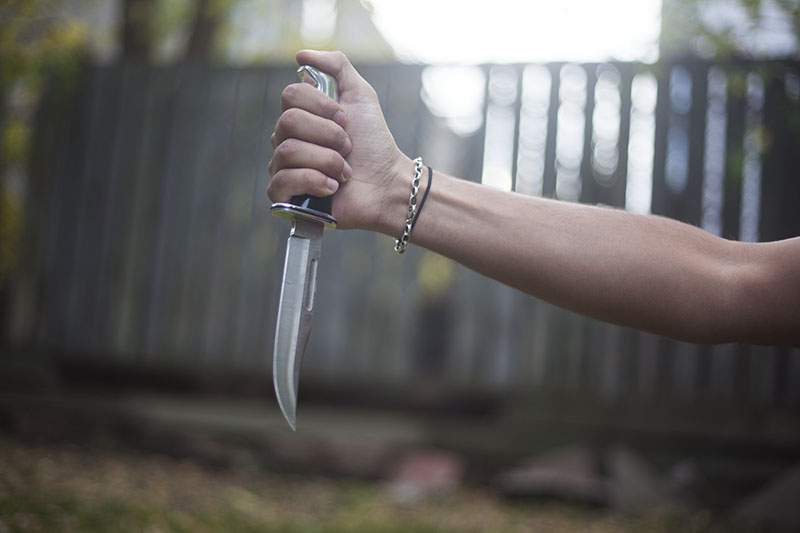
Balance is nearly perfect. I almost feel like if they hadn’t added that blood groove it would have been spot on. Not a deal breaker, but if you want a perfectly balanced knife there are better options.
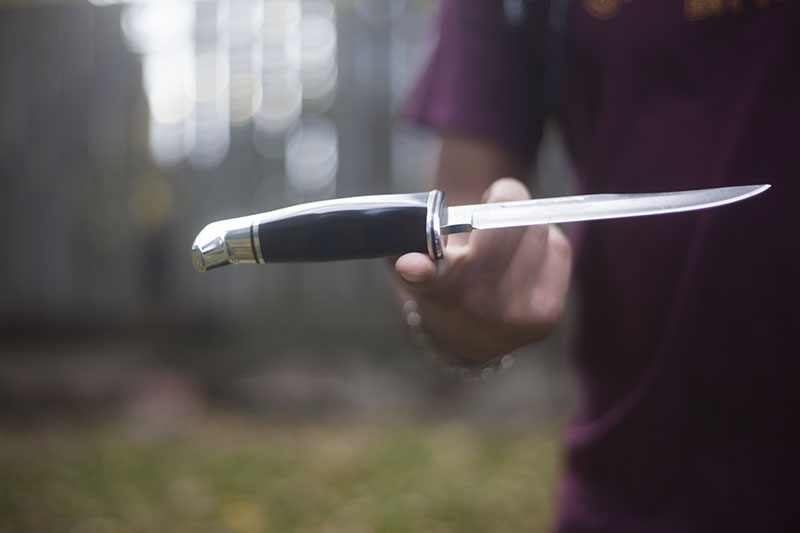
The Buck 119 has a very nice leather sheath made in the U.S.A. (very impressive). Construction is tight and the sheath is very nicely conceived. As you can see below, you have a plastic inner sleeve to protect the sheath from the edge of the knife.
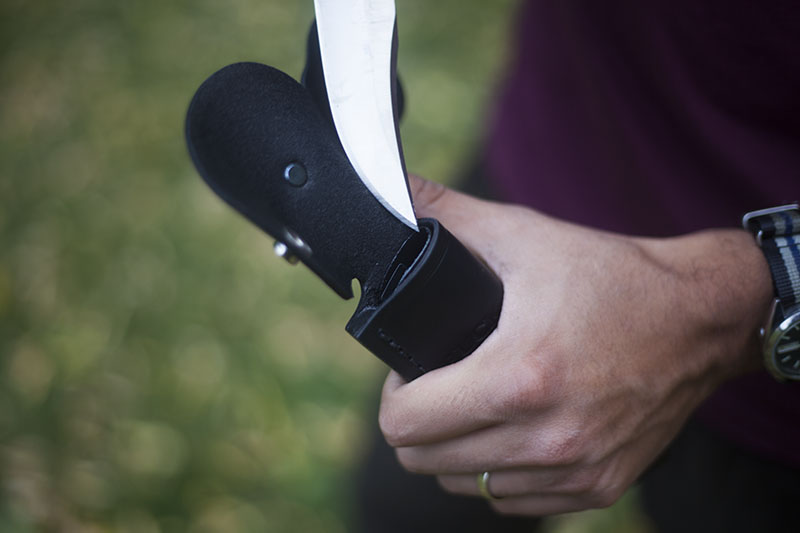
The sheath’s leather is of a decent thickness with tight stitching and no flaws that I could see. I did feel like the leather was a bit stiff, but with some mink oil, a decade of use, and some love, it will be supple and pretty perfect.
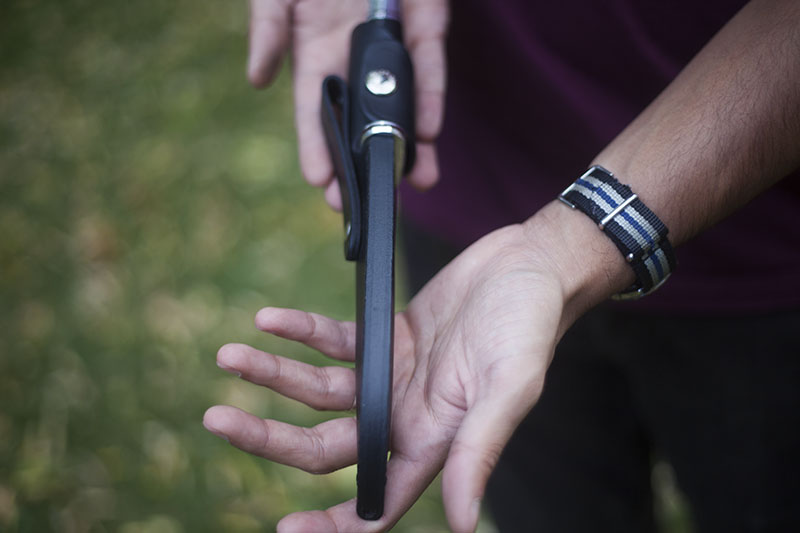
Very nicely implemented drainage hole. Probably the best out of any leather sheath I have handled.
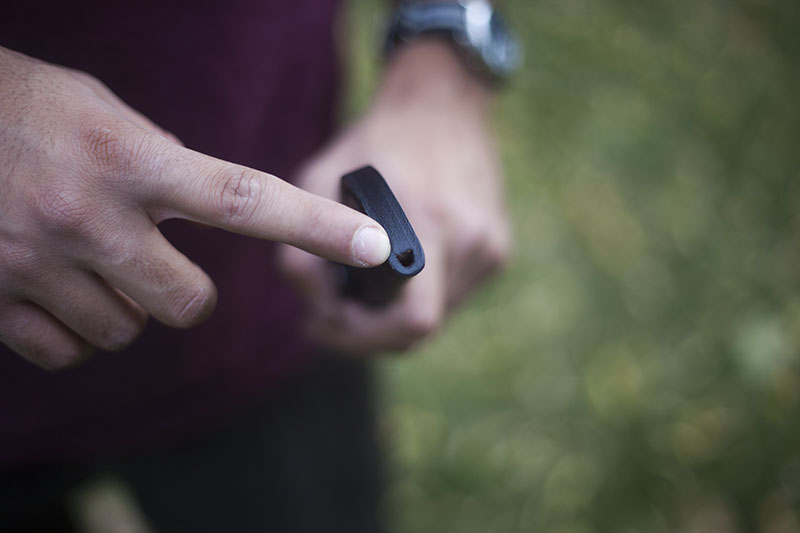
Retention is perfect by virtue of its design. Definitely a plus in this case to have a guard. Deployment is quick, too. With a fast tug, the popper (no idea what that thing is called) disengages leaving the knife free to be pulled out.
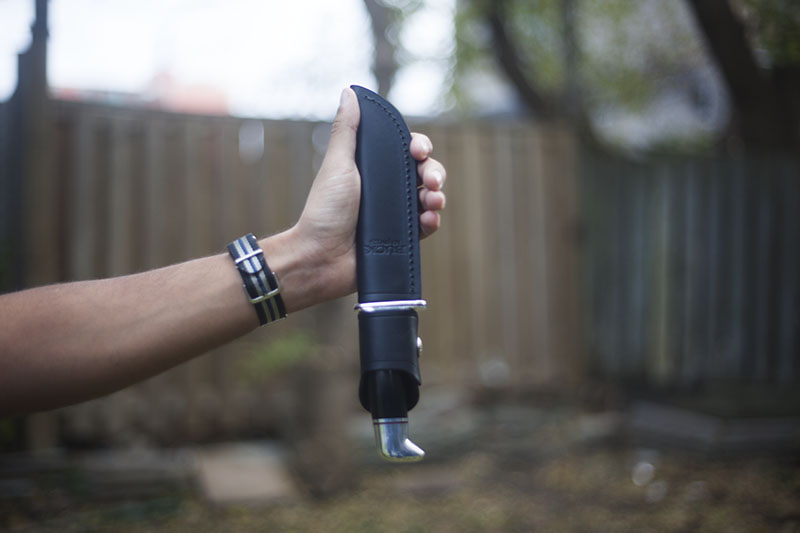
Belt loop is generous. I don’t see any belt not being able to fit it. Even those 2 inch tactical webbing belts should be okay.
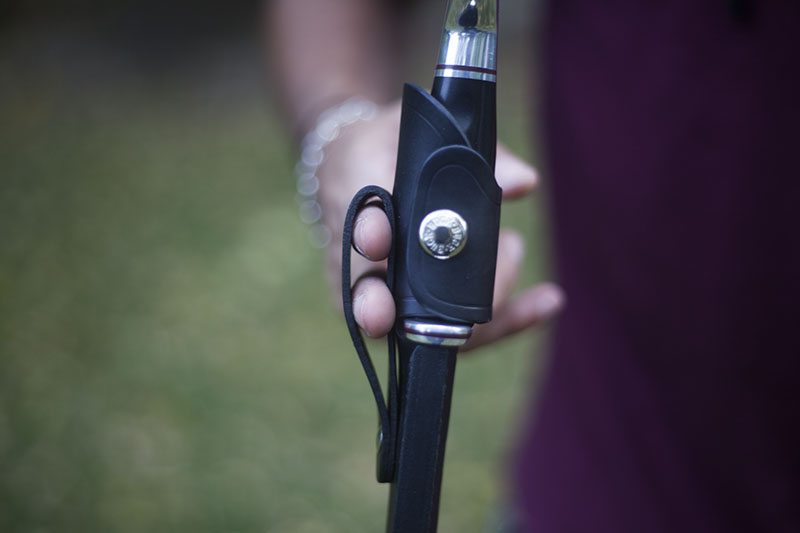
Sits nice and close to the body; no wiggle and easy access. What more can you ask for?
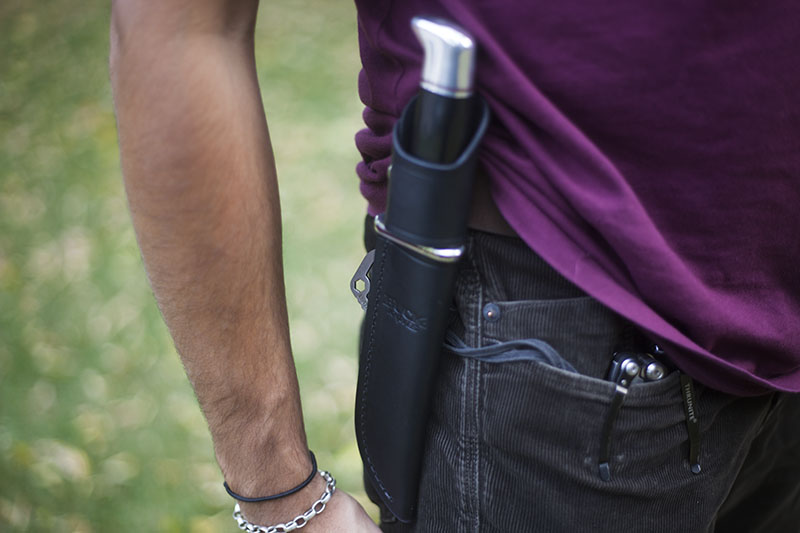
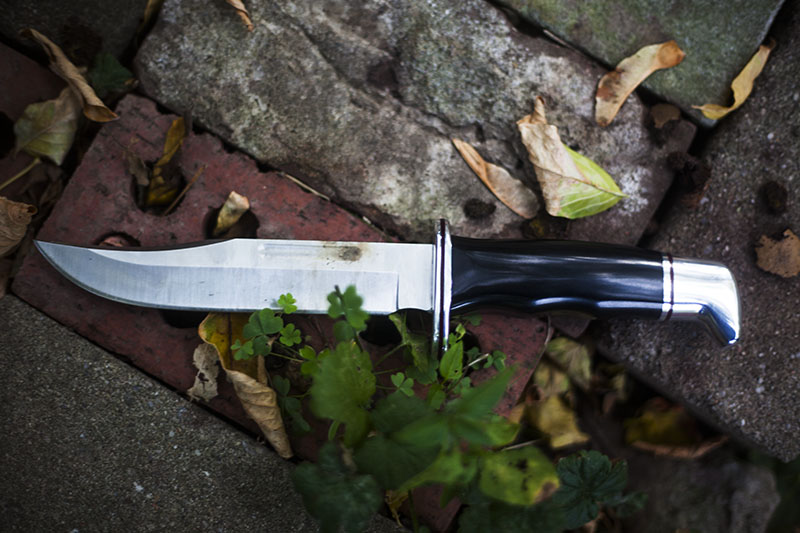
I don’t own any other knife like the Buck 119. Much like the Buck 110, this is a classic through and through. Do you need one in your collection? No. Should you have one? Most definitely yes.
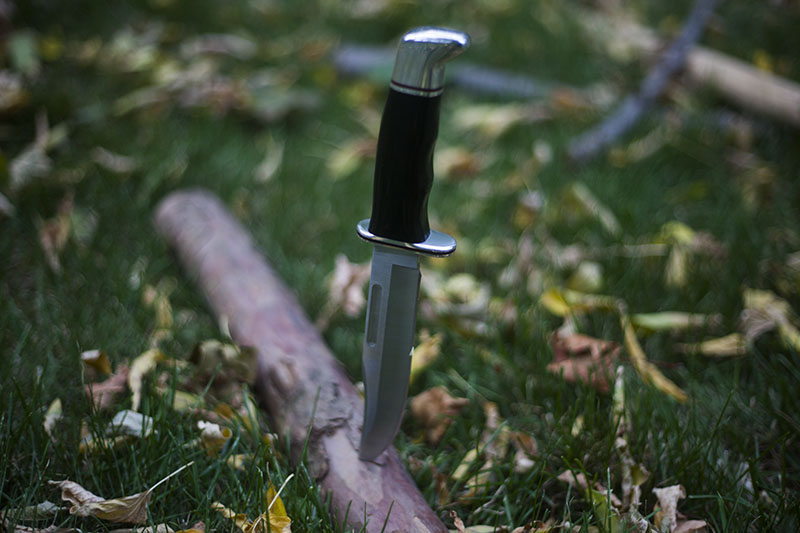
As a performance blade, the Buck 119 can’t really compete with options like the Condor Bushlore, ESEE 6, or the plethora of modern 6inch blades on the market. Its limitations are intrinsic to its classic appeal. You can’t modernize the Buck 119 without losing what makes it the Buck 119.
This is not a bad thing. I love my classic Bucks and feel a distinct sense of protectiveness over them. This is one of the least expensive knives that I think could easily be considered an heirloom item to be passed down. I can’t see myself passing down or cherishing a SOG Seal Pup, but this 7.5 ounce slab of Americana is worthy in my opinion. Not all knives have to be bleeding edge with futuristic materials and super steels. This is the perfect rebuttal to the plague of generic “survival” knives with alphabet steels, unapologetic and unflinching.
Once again, I am concluding this review on an emotional note rater than a performance bias, but no one here really expected any different. No one buys a Buck 110 thinking it will compete with an Endura, and no one should look at the 119 as anything other than a unique, American-made design that has stood, and will continue to withstand, the test of time gracefully.
HOW TO FIX THE DANGEROUS, SUPER-SLIPPERY-WHEN-WET HANDLE:
The solution: Get an o-ring assortment at an auto parts store or off the net. Find the correct size for the Buck’s handle and slip them over it until you have the right size and spacing.
IMPORTANT NOTE: Don’t run an o-ring close to the sheath’s snap. If you do, you’ ll have a hell of a time snapping the sheath shut, and your knife will fall out over and over.
Good tip. I did the O-Ring trick on my Ontario Marine raider- works a treat.
Ha! We make such a fuss about the 420HC because the “old Buck” was 440C and the toughest knife steel most of us had used growing up in the ’50’s and 60’s.. The Buck 120 General quickly replaced my KaBar USMC as soon as I became aware of Buck knives, and they were prized in-country during the VN war. They didnt rust, were hard to sharpen, and took a great edge. For many in that era they were the first stainless blades we had used. Tough as nails too, and NOT in my experience, prone to breakage. It is a “stick-ish”- tang, but goes all the way thru to the pommel and is for all intents one piece (I know this because I hammered the phenolic apart on one just to see).
Unfortunately my 1972-made Buck walked off by itself after 45 years of ownership…. Now I have two of the 119s, one on my pistol belt at all times. I keep a new 120 in my trunk at all times- just in case, ya never know! It’s not my Carbon-5 TrailMaster, but it won’t rust, either. I’m a Cold Steel man, but there seems to be quite a few Bucks in my selection as well.
Just saying, the sheath that comes with it is heavy duty polyester. The plastic guard on mine seems to want to split in half and the sheath is starting to separate a bit on the front right under the sheath only after 2 weeks of use. Othe r than that its my favourite knife so far. I would highly recommend it.
As far as I know, Buck don’t make the sheath but rather subcontract it. Seems a lot of people have found issues with them which is a damn shame.
It was a very informative review of the buck 119. I always wanted one for as long as i can remember. I picked up the 75th anniversary edition and i was impressed. I have over 100 knives. About 70 % folders. Which contain the buck 110. And if i was to sell all of my knives but wanted to keep 2, it would be the 119 and 110. I just cant part with either one. I hardly ever use my 110 because it’s just too heavy. But that doesn’t make it any less important to me. When it comes to a user knife, i prefer to use my rat1 in d2 steel. I absolutely love using my rat. But i would still let it go to keep my buck 110 as my only folder. As for fixed blades, i seem to always be using my buck 102. Another user friendly knife. Would hate to give it up. But all my senses would say keep the 119.
Hah, I feel the same way but with my 110. I always wanted it when I was a kid so when I got one I was utterly smitten. I agree that the weight isn’t ideal but I wouldn’t change a damn thing about it!
You forgot one very important detail. The 119, when being considered as a survival/bush crafting knife, is incredibly fragile. The steel is 440 stainless (very mediocre) and it has a stick tang. I’m surprised you didn’t snap the blade at the hilt when used it to baton with. Keep going and you eventually will.
Also, I’m not sure how often you actually carry a knife into the field (your backyard doesn’t count) but the sheath sucks. It rides up too high on your hip making for an awkward draw and after wearing it for a day or two the narrow strap loop will soften up and your knife will start swinging all over the place as you walk. There is a reason so many people make replacement sheaths for Buck fixed blades.
Great hunting knife, especially for the price, but anyone who suggests using it for anything else (aside from scaring the f*** out of small children) still has a few things to learn. I don’t care how famous and otherwise skilled they are.
I am afraid, sir, that I’m going to have to revoke your title of ‘aficionado’ and replace it with that of ‘city boy with a hobby who goes camping sometimes’.
Hi Vorshack, frankly- I couldn’t care less what title you choose to bestow on me. For that matter, you should probably let Mora know that their knives are weak and can’t survive the outdoors because they have stick tangs, as well as tell every bushcrafter & survivalist that have depended on such tools for literally generations that they are doing it wrong. I am sure they will be relieved to be educated by such a noted individual such as yourself. ;) (I suggest starting with Cody Lundin & Les Stroud who both use stick tang blades to survive and in Les Stroud’s case, he did so with a Buck 119- please inform him that his tool of choice was wrong and he should learn more about the outdoors and survival).
Side note, the Buck 119 does not utilize 440 steel and for that matter, 4XX series steel is anything but fragile when heat treated properly. I suggest you spend less time on the forums and more time outside using your tools. I promise that they won’t magically break just because they don’t have O1 stamped on the blade.
I bought my Buck 119 when I was 16. I’m gonna be 20, so I’ve only had it for a few years, but I expect to grow old with it. I used to be a very passionate knife nerd, buying around 25 different fixed blades when I was 17. I sold every one of them when I grew out of that phase (including my beloved Cold Steel Recon Scout) but I kept my 119. It’s the only knife I still have apart from a small Leatherman and a SAK.
As far as performance, it has always done what I needed it to do. Does it chop like my Recon Scout did? No. But it does chop, slice, and poke good enough to never leave me wishing I had a different knife. It feels extremely versatile. I’ve taken it on week-long 90-mile trans-Sierra hikes, I open boxes with it, I do housework with it, I keep it tucked into my waistline as a self-defense weapon (legal in Pennsylvania), and I use it as my kitchen knife.
It never rusts, it sharpens very easily, and holds a 20-25 degree edge quite nicely. I grew up in Southern California in a beach town, and that place used to murder my O1 and other carbon steel knives with rust. I would remove the rust, coat the knives in Sentry Solutions knife oil, and then they would rust after sitting on my shelf for two days (actually measured it). My 119 never rusted. I now live in Pennsylvania, so rusting isn’t even an issue, but it’s nice knowing it can withstand corrosion so well.
The 420HC is a good all-around steel, and the Paul-Bos treatment makes it even better. I toyed with the idea of getting a custom 119 through the official Buck website (you can do that now) since there is an option to get the 119 in SV-30. If my current 119 ever dies, I might get one of those. It would be a slight bummer not being able to sharpen it as easily though, and the versatility of the 420 HC has really grown on me.
As far as the phenolic handles, I really like their durability. It’s the same stuff that bowling balls are made out of, and those will crack concrete slabs before they crack themselves (there are videos to show). The Kray-Ex and G10 and Micarta that I was used to with my other knives was certainly more grippy, but even when wet my 119 always feels secure in my hand.
I’ve held off on making a review of this knife, since I wanted to give it some time so I could get familiar with it. It’s been about 4 years now, so when I came across this review I figured I’d write my own.
119 is a solid workhorse, yes its not the optimal tool for all jobs but it can handle itself just fine as you quite rightly pointed out. I never understood why people made such a fuss over 420HC- its a solid, reliable stainless.
Ha! We make such a fuss about the 420HC because the “old Buck” was 440C and the toughest knife steel most of us had used growing up in the ’50’s and 60’s.. The Buck 120 General quickly replaced my KaBar USMC as soon as I became aware of Buck knives, and they were prized in-country during the VN war. They didnt rust, were hard to sharpen, and took a great edge. For many in that era they were the first stainless blades we had used.
Unfortunately my 1972-made Buck walked off by itself… Now I have two of the
Its such a cool knife with such a cool history. Its interesting that the most used knives in the field are so “basic” compared to tactical equivalents. The most common soldiers knife that I have seen is the Gerber Paraframe- a byproduct of being sold at the PX stores I expect. Thanks for dropping by Ronald.
Pete again. Thought i would pass on that i also just got a old hickory 7.25 inch butcher knife in the mail. I see alot of people just cant say enough about it. Paid 8.23 dollars for it. I matched it up with a new Kbar sheath ive had for years. Fits great. Cut tomatos super thin right out of the box. Im going to beat it to death and see what happens. Im hoping it will make a great back up knife. If i break it i will just get another one.
Those old hickories have such a great reputation- sorta like the American Mora’s in my opinion. I have a Sheffield made green river knife that is very similar to an Old Hickory. Damn good blade!
At around 16 years old i bought my first buck. It is a 119. At that time there was not a big selection of knifes like today. The 119 has always served me well. That was over 50 years ago. I just purchased a SOG super bowie. Its so nice i hate to use it. I think the super bowie will out preform my 119. We will see.in the field i always carry 3 different size knifes for many different situations.
It is likely that the Super Bowie will outperform the Buck for chopping and harder use tasks (much more heavy duty blade) but then again, the Buck is a traditional design that hasn’t changed much in over half a century, that must count for something. ;)
Good review! I have a Buck 119 Special and it’s a very practical hunting/utility knife. I have owned Buck’s since the early 70’s and have never felt under equipped.
Aye, Buck often gets attacked for being “too old fashioned” and not keeping up with the latest trends etc. but frankly- if it works- who cares?
Never had a Buck knife fail on me and I don’t expect it to happen either!
Excellent review of an excellent knife. I especially enjoyed the photographs.
Buck 119 has been a favorite of mine since I was about 15 when I purchased it. It’s an older late 70’s model, slightly differing from the newer ones like yours. Most notably is it lacks a choil area. It has a slightly recessed area before the blade, but it’s sharp edge digs into your finger. I much prefer the newer choil design. I always thought the guard was to prevent your hand from sliding up the blade when cleaning game. I beat the heck out of mine for years when I was a teenager, doing all sorts of dumb and abusive things to the poor blade. It took it all and asked for more. It really baffles me when people say this knife is “weak”. I’m curious to see if a newer blade with the 420HC could withstand the abuse. But, I don’t think I could bring myself to torture another one of these beautiful blades.
Have you got any experience with the Buck 120? I recently ordered one as my new belt knife. I don’t much care for knives larger than the 119, but I wanted something to work as a short brush cutting knife, as the bush gets thick around here and I get tired lugging around a machete all the time.
Aye, nothing weak about the 119. People need to get out and test their knives. No experience with the 120- i’ll look into it, maybe even do a review!
this is my go to outdoor knife. i received it from my uncle as a Christmas gift. every time i go fishing or outdoors i take this knife with me, its hefty, a plus for me but a negative for others, and durable. it exceeds even when out the its element. it became my kitchen knife after the one i was using broke. like my SOG ive been through a lot with, infact my buck almost got me arrested but thats another story, these knives should be in everyones collection or in every utility drawer if nothing else. love your indepth reviews, little biased to spyderco but its not my place, my dad has the ultra small spyderco on his keychain, little sucker has come in handy a few times.
I am definitely biased towards Spydies, with that said I don’t sugarcoat a bad Spyderco knife. Check out my Spyderco Urban review- I was not happy.
Definitely agree with you about everyone needing one of these, its a slice of history that happens to be a great, functional tool.
Awesome Blog guys!. I just discovered this knife not too long ago. After my Uncle saw my Kershaw in my pocket, he suggested to me that the best knife around is The Buck. You said, “A Buck knife is unapologetically a Buck knife”. That is true. For some reason, some of use think that only tactical knife can do the job. But, as you stated, ” very much a capable tool, even to date.”. Thanks guys.
Thanks Daniel, the bias against older knives is ridiculous in my opinion. As long as it works- who cares when it was designed?
Looking at your photos using the Buck for carving notches and what knot, I thought I’d share something I stumbled upon.
In my kit, I have a Mora farriers knife (Ben’s Backwood). Try as I might I can’t come up with a reasonable sheath for it, So I just wrap the hooked blade in several wraps of heavy cotton pants material, salvaged from worn out pants, and tie it off with a cord.
Carving some time ago, I was impressed how awkward it is to control my 5″ sheath knife when using the far end of the blade to produce fine exact cuts while making a figure four trap.
As I was also using the the farriers/hook knife, the scrap of pant material was laying there not doing anything.
As an experiment I wrapped the blade of my sheath knife in the material leaving about two inches of the end exposed. We all know that when doing fine cutting you don’t need a snake killing grip and the wrapped material performed just fine. After carving for a good bit I inspected the cloth and could find no indication that it had suffered from being next to the sharp. And of course working with such a stubby cutting blade the control was much improved along with being much safer.
Interesting observation, I have been considering using the teeny tiny Carving knife from Mora.. I think I would have similar results to you in terms of performance.
I have zero experience with hook knives with the exception of a very large antique Billhook so I can’t comment much on that- will definitely take a look at the Mora farrier line of knives though!
Nice Review Thomas !
I have had a similar model and noticed the choil, about identical, seems much more present, no slip and safer to use with a light leather glove. Bullletproof knife, and i completely agree that the six inches is the ideal blade length for a trail knife imho
cheers
Glad to hear we are on the same page! What are your thoughts on the ESEE 6? I have been looking at it recently…